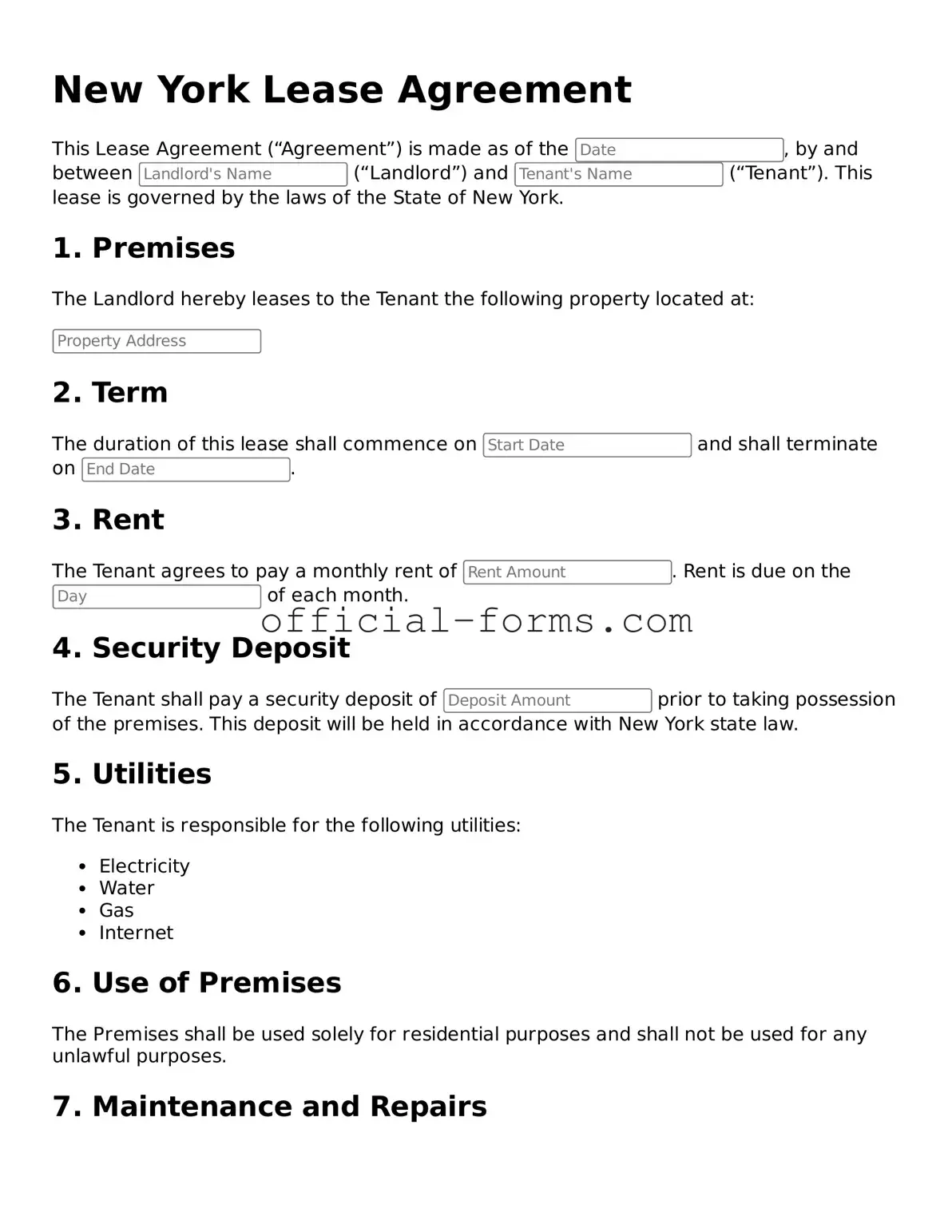Filling out the New York Lease Agreement form can be a straightforward process, but many people make common mistakes that can lead to complications later on. One frequent error is not providing accurate personal information. This includes names, addresses, and contact details. Ensure all information matches official documents to avoid any discrepancies.
Another mistake often seen is neglecting to specify the lease term clearly. A vague lease term can lead to misunderstandings about the duration of the rental agreement. Clearly state the start and end dates to prevent confusion.
Many individuals forget to include the security deposit amount. This figure is essential for both landlords and tenants, as it outlines the financial expectations upfront. Leaving this blank can lead to disputes later on.
Additionally, some people fail to read the entire lease before signing. This oversight can result in agreeing to terms that may not be favorable. Take the time to review each section thoroughly to understand your rights and responsibilities.
Another common mistake is not documenting the condition of the property before moving in. It is crucial to note any existing damages or issues in writing. This step protects both parties and helps avoid disputes regarding the security deposit at the end of the lease.
Some tenants also overlook the inclusion of utilities in the lease agreement. Clearly outline which utilities are included in the rent and which are the tenant's responsibility. This prevents unexpected costs and misunderstandings.
People often fail to clarify pet policies. If pets are allowed, specify any restrictions or additional fees. This clarity helps avoid conflicts between landlords and tenants regarding pet ownership.
Another mistake is not including the right to sublet. If a tenant plans to sublet the property, it should be clearly stated in the lease. This protects the tenant’s ability to find someone to take over the lease if necessary.
Many individuals forget to include the method of rent payment. Clearly state how and when rent should be paid, whether through checks, online payments, or another method. This helps maintain a smooth financial relationship.
Finally, some people do not keep a copy of the signed lease. Always retain a copy for personal records. This document serves as a reference for both parties and can be invaluable in case of disputes.
